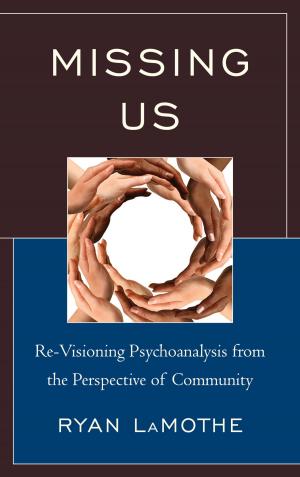Multimedia Psychotherapy
A Psychodynamic Approach for Mourning in the Technological Age
Nonfiction, Health & Well Being, Psychology, Psychoanalysis, Family & Relationships, Family Relationships, Death/Grief/Bereavement| Author: | Domenico A. Nesci | ISBN: | 9780765709141 |
| Publisher: | Jason Aronson, Inc. | Publication: | November 29, 2012 |
| Imprint: | Jason Aronson, Inc. | Language: | English |
| Author: | Domenico A. Nesci |
| ISBN: | 9780765709141 |
| Publisher: | Jason Aronson, Inc. |
| Publication: | November 29, 2012 |
| Imprint: | Jason Aronson, Inc. |
| Language: | English |
Multimedia Psychotherapy is a new technique that helps patients to mourn and overcome loss and grief experiences as well as blocks and inhibitions in the life cycle. The method can be easily summarized in 5 steps: the intake (where the therapist explains the technique to the patient), the “picture sessions” (where the patient, helped by his/her own family, brings in pictures and works them through freely associating with memories and emotions evoked by the images), the “music session” (during which a song or music is chosen by the patient in order to become the soundtrack of the “psychodynamic montage” which a multimedia artist, who collaborates with the therapist, will produce and then give back to the therapist), the “screening session” (where patient and therapist watch, comment, and elaborate the video together), and the outcome. Although this psychotherapeutic technique is rooted in a psychodynamic approach, it can be applied and integrated within any form of psychotherapy. Multimedia Psychotherapy is conceived as a manual in order to let all health professionals who work as psychotherapists to learn the new technique and apply it with their own patients. Excerpts from sessions are quoted to describe each step of the therapy. At the same time, two theoretical chapters are devoted to explain how and why the “memory objects” created by the multimedia artist are so effective in helping patients to mourn their complicated grief and/or overcome their blocks or inhibitions in normal development. Finally a new supervision model (the Clinic and Dreams Workshop) is described as well as a training group experience, once again through excerpts of such new teaching seminars. The book is written as a “story” in the format of “narrative medicine.” It ends opening new horizons: how to use Multimedia Psychotherapy to make “memory objects for the future,” during pregnancy and prenatal life, or to help Alzheimer patients not to lose their capacity to recognize their own relatives.
Multimedia Psychotherapy is a new technique that helps patients to mourn and overcome loss and grief experiences as well as blocks and inhibitions in the life cycle. The method can be easily summarized in 5 steps: the intake (where the therapist explains the technique to the patient), the “picture sessions” (where the patient, helped by his/her own family, brings in pictures and works them through freely associating with memories and emotions evoked by the images), the “music session” (during which a song or music is chosen by the patient in order to become the soundtrack of the “psychodynamic montage” which a multimedia artist, who collaborates with the therapist, will produce and then give back to the therapist), the “screening session” (where patient and therapist watch, comment, and elaborate the video together), and the outcome. Although this psychotherapeutic technique is rooted in a psychodynamic approach, it can be applied and integrated within any form of psychotherapy. Multimedia Psychotherapy is conceived as a manual in order to let all health professionals who work as psychotherapists to learn the new technique and apply it with their own patients. Excerpts from sessions are quoted to describe each step of the therapy. At the same time, two theoretical chapters are devoted to explain how and why the “memory objects” created by the multimedia artist are so effective in helping patients to mourn their complicated grief and/or overcome their blocks or inhibitions in normal development. Finally a new supervision model (the Clinic and Dreams Workshop) is described as well as a training group experience, once again through excerpts of such new teaching seminars. The book is written as a “story” in the format of “narrative medicine.” It ends opening new horizons: how to use Multimedia Psychotherapy to make “memory objects for the future,” during pregnancy and prenatal life, or to help Alzheimer patients not to lose their capacity to recognize their own relatives.















